Nobody will doubt that Bayer Leverkusen are a Bundesliga team with a lot of potential. However, it seems that Leverkusen cannot really keep up with the absolute top sides of the league. Despite a really attractive style of play, their results often upset their plans.
In the following tactical analysis, we are going to examine Bayer Leverkusen under Peter Bosz and explain what Leverkusen lack to become a true Bundesliga top side. Therefore, we give a short overview of Peter Bosz’s system at Leverkusen before unveiling three of their main weaknesses as well as how they could be solved.
System
At first, we have to look at how Bosz sets up his side. Different to last season where Leverkusen often played with two advanced midfielders, Leverkusen often play with a single playmaker this season. Since Julian Brandt left the club and moved to Borussia Dortmund, his former partner in advanced midfield takes over the position of the single playmaker now. As one can see below, Leverkusen played most of their games in a 4-2-3-1 system in the first half of the campaign.
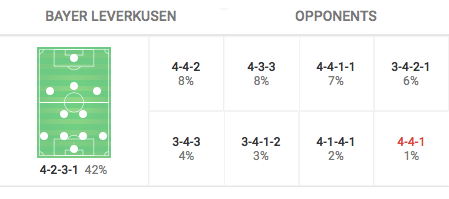
And, before going more into depth in terms of Leverkusen’s issues, it has to be mentioned that Bosz has lent this Leverkusen side a tactical flexibility. Under the reigns of the Dutch coach, Leverkusen can build up with either three or four at the back, progress up the pitch with different midfield structures and attack with a single attacker or a striking-duo while still remaining faithful to their playing philosophy.
With the heart of their midfield in Kai Havertz recently being man-marked by an opposition defensive midfielder though, Leverkusen struggled to find solutions to penetrate the opposition defence.
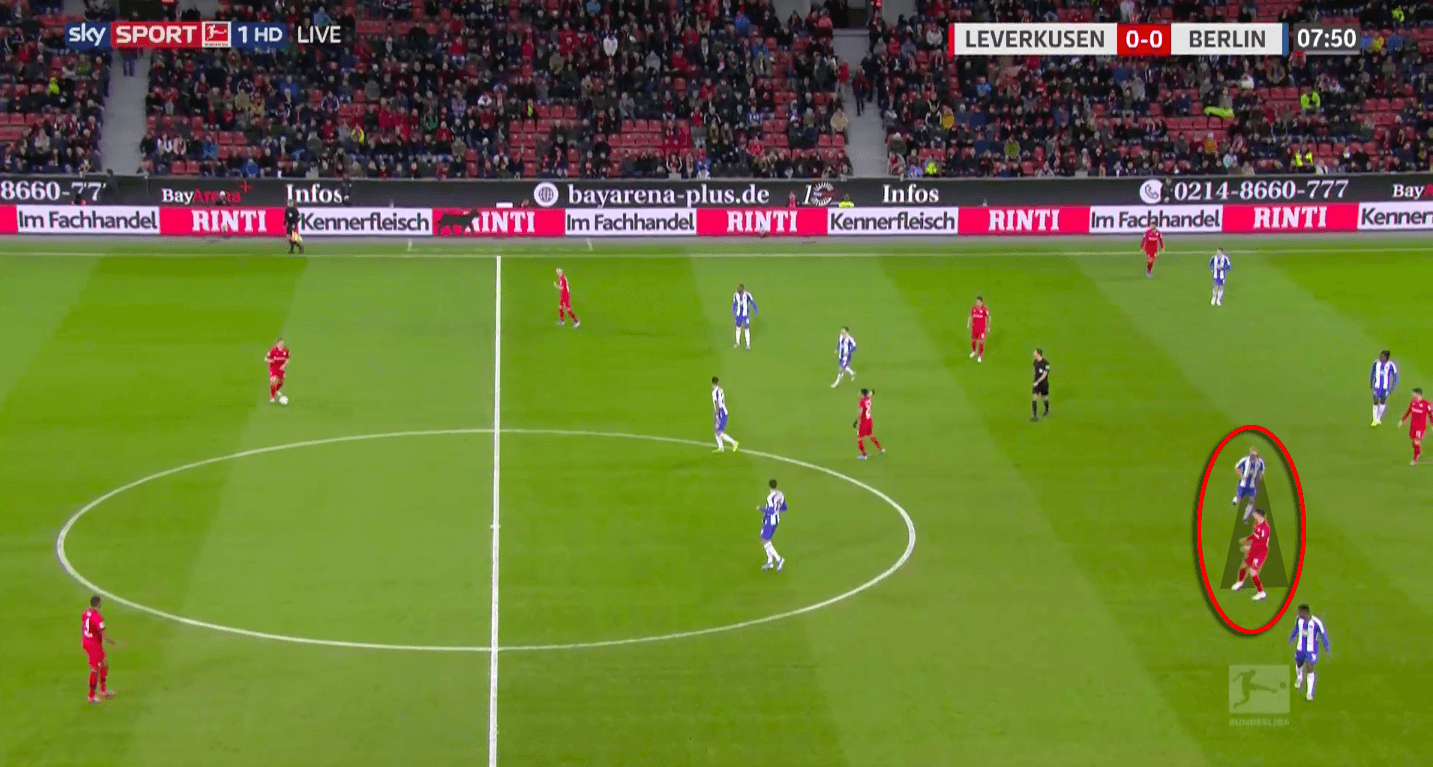
With problems to create chances through the centre, Leverkusen often relied on their wing play which we are going to examine in the following part of our analysis.
Chance creation from wide areas
When taking a look at Leverkusen’s attacking style, it becomes clear that crosses are a main part of their way to threaten the opposition goal or at least one way they attempt to. Out of all Bundesliga sides, Leverkusen rank 3rd with 16.86 crosses per 90 minutes. This data, however, also has his downside. With an accuracy rate of 23.9%, Leverkusen are far below the average of 32.46% as the side with the lowest value of the whole league. But how does that come?
One of the main problems of their crossing are the platform from which they send in the balls. Rarely do Leverkusen get towards the end line before crossing. Instead, they will cross from further away from the goal.
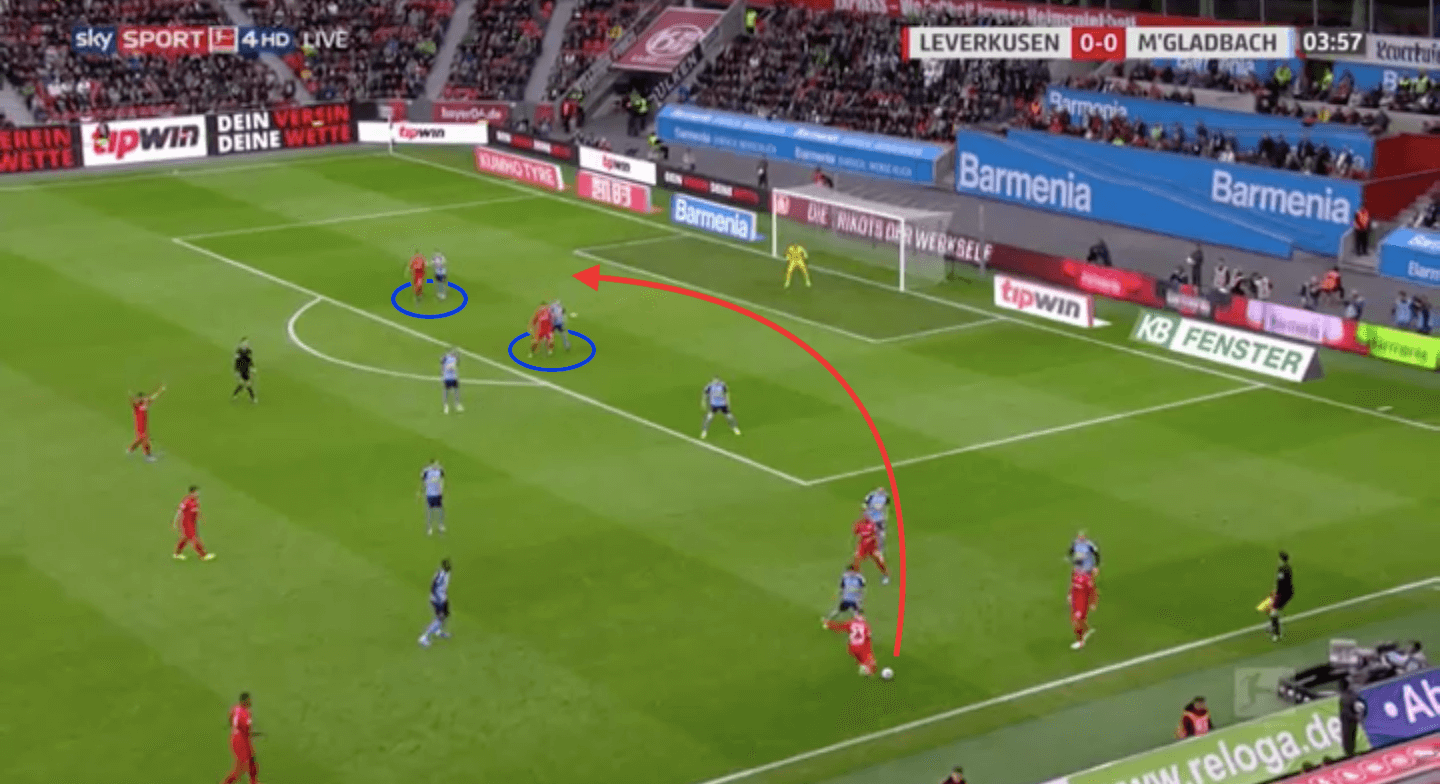
An increased distance entails several disadvantages. Firstly, it is simply more difficult to send in an accurate cross due to the distance. Secondly, the attackers and also the opposition defenders are in a static position. Contrary to end-line dribbling where defenders need to adjust their position as there is no offside anymore which means that they have to defend both ways, forwards and backwards, in case of a low-platform cross, the defenders can stay further away from their goal and already prepare to defend the space in their back. This facilitates defending for Leverkusen’s opponents. Last but not least, the further away from the goal, the more opposition players will be positioned behind the ball. That either allows the defensive department to block the cross or at least to decrease the options how to send in the cross.
Another problem is that Leverkusen often play a single striker in Kevin Volland or Lucas Alario. Their wingers or central advanced midfielders are supposed to provide passing options between the lines. As a consequence, they cannot take up positions within the opposition box soon enough. Even if they can, most of them miss the aerial ability to score with a header.
In the moments when Bosz’s side can flood the box, they lack the needed patience. Especially when creating promising opportunities such as an overload against the opposition full-back, Leverkusen fail to take advantage of that due to precipitate actions. Below, for instance, Leverkusen have a numerical superiority on the wing and four players in the box. Due to a bad cross, however, the opposition goalkeeper can catch the ball without any danger.
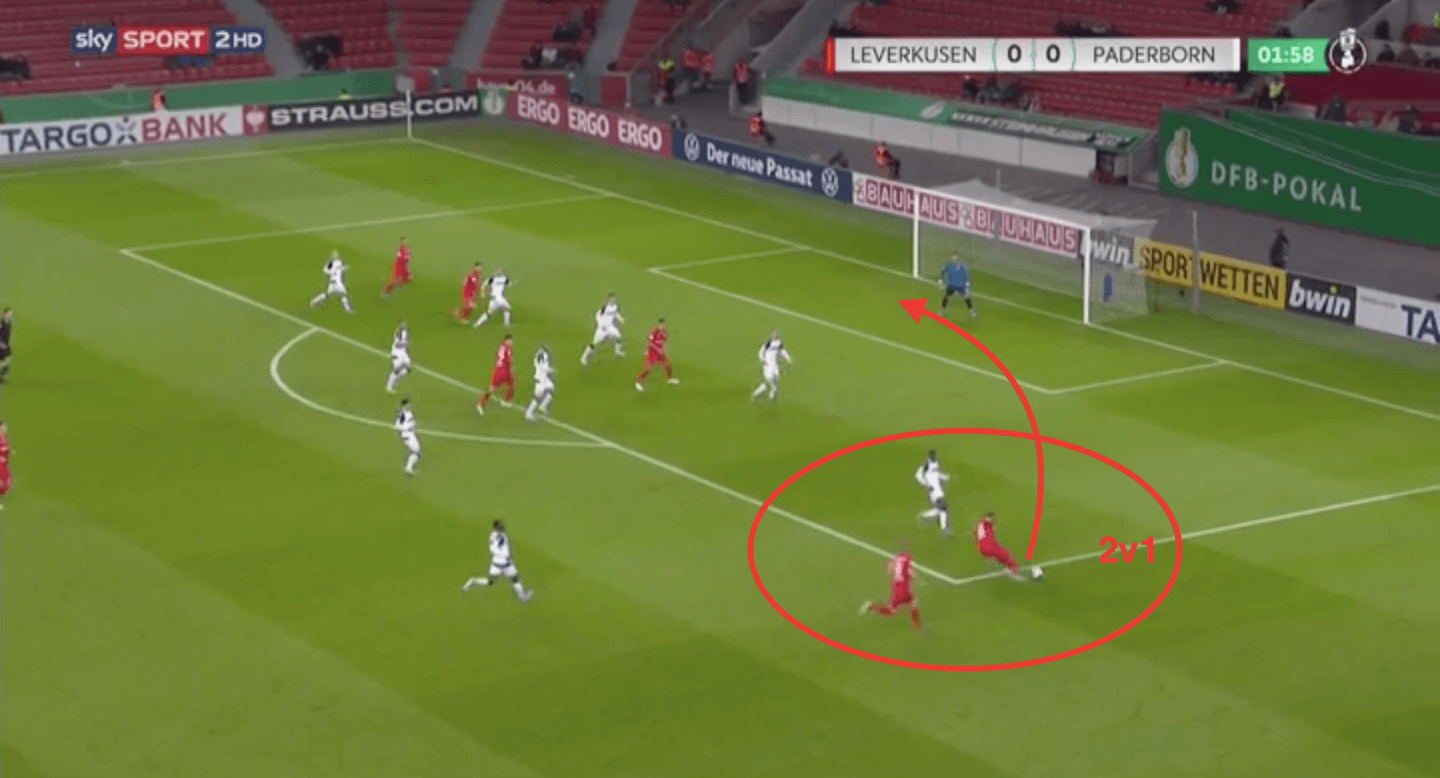
It seems that this Leverkusen side lack patterns that are communicated and allow their attackers to know whether they need to flood the box or to stay between the lines to change the angle of attack. With this problem not being solved, Leverkusen waste some of their attacking potential.
Defending the counter
At his last club, Peter Bosz mainly struggled with defensive transitions. This as the biggest issue in tactics played a big role when Dortmund decided to sack Bosz. At Leverkusen, one has to admit that Bosz seems to have learned from former mistakes. Leverkusen’s behaviour after losing the ball is better than at Bosz’s former Dortmund side. Nevertheless, there are still some problems left which cause Leverkusen to concede more goals than necessary.
As Bosz wants his side to control the game in possession, a quick counter-pressing is executed after losing the ball. To decrease space for the opposition, their backline moves up the pitch in these moments. This is a sensible approach. When their midfield is overplayed though, this behaviour can be dire. Although the offside trap might be advantageous in some cases, it definitely is not when there is no pressure on the ball. With opposition attackers ready to run into depth Leverkusen’s defence can be outplayed with a simple pass.
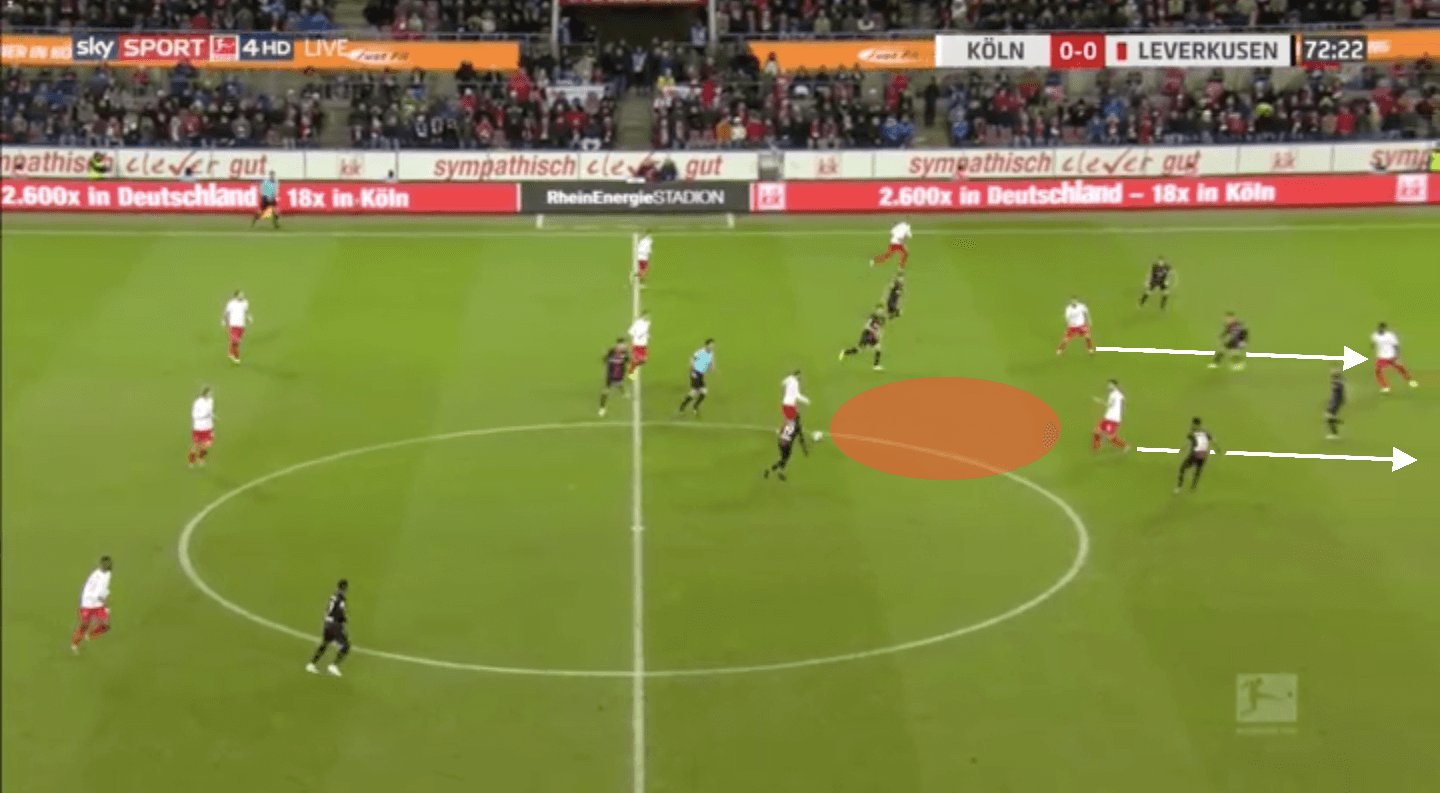
Without pressure on the ball, it would be more sensible to drop towards the own goal, delay the attack and wait for the midfield to press backwards.
Besides the problems in their positioning, however, one has also to admit that Leverkusen’s defenders are not the fastest ones. Playing with such a high line, therefore, is even riskier. Nevertheless, as the counter-pressing and high defensive line is a clear part of Bosz’s philosophy which also fits the Leverkusen DNA, it should be aimed at recruiting players that suit this defending style rather than changing the approach.
Defending the box
But Leverkusen showed another defensive weakness in the first half of the 2019/20 Bundesliga campaign. When the opposition focused on creating chances through crosses, Bosz’s side often struggled to defend against this approach. Within their own penalty area, the defensive principles seem unclear sometimes. With most of their players watching the ball and trying to defend space which is not even threatened, Leverkusen invite the opposition to play simple ground balls into dangerous areas. The image below shows how Leverkusen lack a tight marking within their own penalty area.
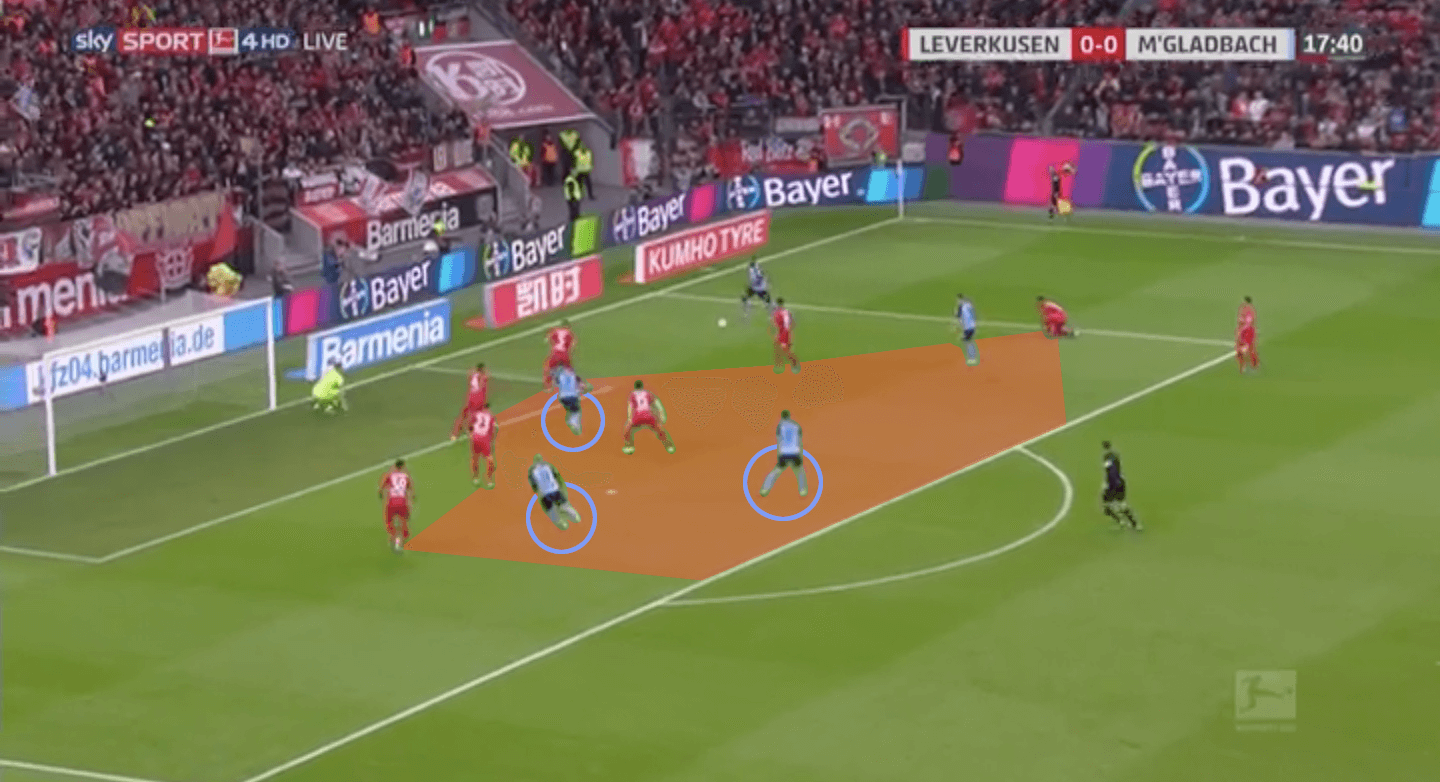
And even if the opposition attackers are marked tightly, Leverkusen often act too ball-oriented. In relatively dangerless zones, they try to win the ball while neglecting to cover more important areas. This opens up gaps for the opposition midfielders to start into. Below, one can see how Leverkusen create a 2v1 situation near the ball. Since they cannot block the ball, their numerical superiority becomes useless while they lack a player to cover the area in front of the central defence.
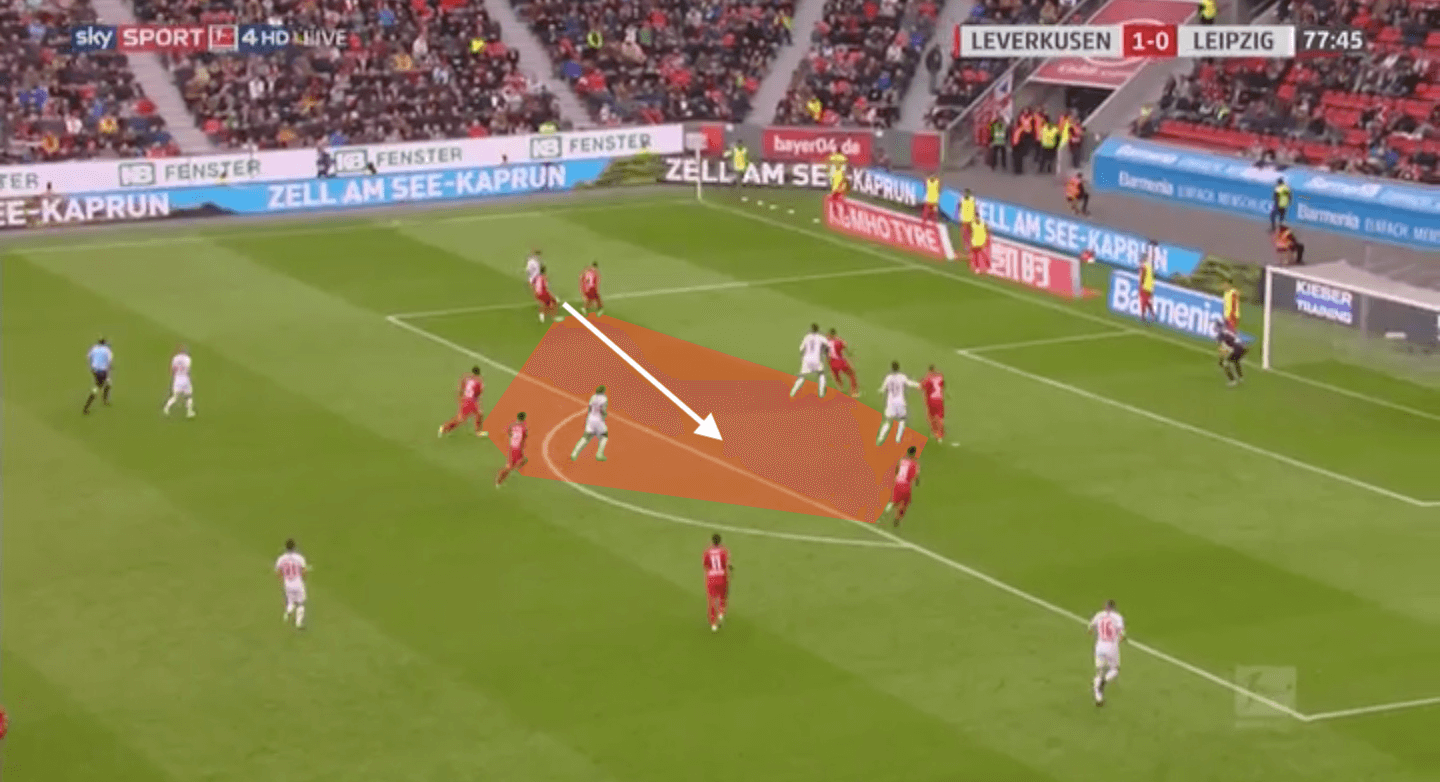
Conclusion
To sum up, as our scout report showed, Leverkusen currently are a side with a lot of potential without fully utilising it. If Peter Bosz could increase the attacking threat from wide areas and decrease their defensive issues within the box, Bayer Leverkusen could even challenge the absolute top sides of the Bundesliga though.





Comments